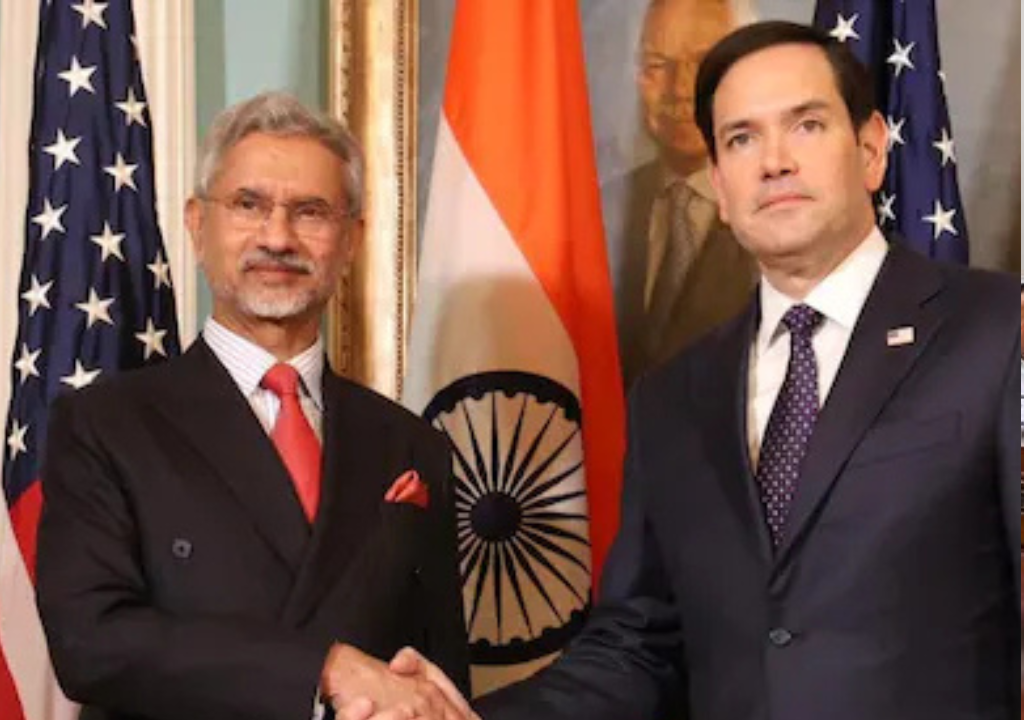India-Pakistan tensions have reached a dangerous high after a series of drone attacks, missile strikes, and military operations across the border. In response, the United States has urged both countries to exercise restraint. US Secretary of State Marco Rubio called Pakistan Army Chief General Asim Munir, offering help in initiating dialogue. The US also reiterated its support for de-escalation through diplomatic channels, stating it would not intervene militarily. Meanwhile, India continues to respond to Pakistan’s provocations with targeted precision strikes under Operation Sindoor.
US Calls for Calm Amid Rising Tensions
In a strong diplomatic move, Marco Rubio spoke to General Munir, urging Pakistan to reduce hostilities and cooperate in avoiding future conflict. A statement from the US State Department spokesperson Tammy Bruce confirmed that the Secretary emphasized dialogue and counter-terrorism commitments.
Rubio has also been in touch with India’s External Affairs Minister S. Jaishankar and Pakistan’s Prime Minister Shehbaz Sharif, encouraging both sides to open communication channels.
White House: America Will Not Intervene Militarily
At a White House briefing, Press Secretary Karoline Leavitt made it clear that while the US encourages peace, it has no intention to mediate:
“These are two nuclear-armed neighbors with decades of hostility. While we want to see tensions reduce, the US is not taking sides.”
US Vice President JD Vance echoed this stance, stating:
“America cannot dictate peace to India or Pakistan. We will support diplomatic efforts but will not enter into direct involvement.”
Background: What Triggered the Latest Escalation?
The current phase of India-Pakistan tensions was triggered by the April 22 terror attack in Pahalgam, Jammu and Kashmir, in which several civilians and personnel lost their lives. The attack was reportedly orchestrated by Pakistan-based terror outfit Jaish-e-Mohammed.
In retaliation, India launched Operation Sindoor, a military campaign targeting terror hubs in Pakistan and Pakistan-occupied Kashmir (PoK). The operation included airstrikes, drone deployments, and ground support, destroying at least nine terrorist launchpads.
🔗 Related: Operation Sindoor: India Conducts Precision Missile Strikes on Terror Targets »
Drone Warfare: New Phase of Provocation
India has faced three waves of drone and missile attacks from Pakistan in the last few days. Military installations and urban areas in Jammu & Kashmir, Punjab, and Rajasthan have come under fire.
Key Facts:
- 26 sites targeted using drones and loitering munitions
- Kamikaze drones of Turkish origin (Byker YIHA III) were spotted
- High explosive payloads were used in several cases
- Civilian areas like Amritsar, Rajouri, and Khasa Cantt were targeted
India’s Air Defence systems responded immediately, intercepting the UAVs before they could reach ground targets.
India Responds with Airstrikes and Ground Operations
In response, the Indian Army and Air Force launched a multi-layered counteroffensive:
- Precision airstrikes on terror camps near the LoC
- Missile strikes on infrastructure used by terror handlers
- Electronic warfare to jam incoming UAVs
- Use of real-time satellite surveillance
The Ministry of Defence also released video footage of successful strikes on terror camps operating near the Line of Control, asserting that all actions were taken with minimal collateral damage.
🔗 Also Read: India Destroys Terrorist Launchpads Near LoC | Army Shares Precision Strike Video »
Explosions in Srinagar and Pakistan’s Air Bases
Hours after Pakistan’s third drone wave on Saturday morning, multiple explosions were heard in Srinagar. Though the government has not confirmed the cause, it’s believed to be a retaliatory action by Indian forces.
At the same time, Pakistani airbases near Islamabad and Karachi reported heavy explosions. The Pakistani government shut down its airspace temporarily, fueling speculation of another precision strike by India.
Statements from Indian Military Officials
Colonel Sofiya Qureshi, Wing Commander Vyomika Singh, and Foreign Secretary Vikram Misri jointly briefed reporters in Delhi. Highlights include:
- Pakistan’s attacks were deliberate and targeted.
- India destroyed terror hubs used for infiltration and planning.
- No Indian strategic site like the S-400 base, BrahMos depot, or Suratgarh airfield was damaged, countering Pakistani misinformation.
🔗 Also Read: Indian Fighter Jets Bomb Pakistan Air Bases »
US Balancing Act: Encouragement Without Involvement
While the US urges de-escalation, it walks a tightrope between two key strategic partners. India has welcomed the US stance but remains clear on its independent right to retaliate.
US Approach:
- Encourage both sides to talk, not fight
- Offer diplomatic support, not military mediation
- Avoid direct involvement in South Asian conflicts
This marks a shift in US foreign policy, aligning with Vice President JD Vance’s vision of limiting American military involvement abroad.
Conclusion
As India-Pakistan tensions spiral, the world watches closely. The US call for calm reflects international anxiety about potential escalation between two nuclear powers. India has sent a strong message: while it remains committed to peace, it will not hesitate to defend its sovereignty.
Whether this phase leads to de-escalation or further confrontation depends largely on Pakistan’s willingness to control terror groups operating from its soil and India’s calculated response strategy. What remains clear is that diplomacy must move faster than drones if peace is to prevail.

